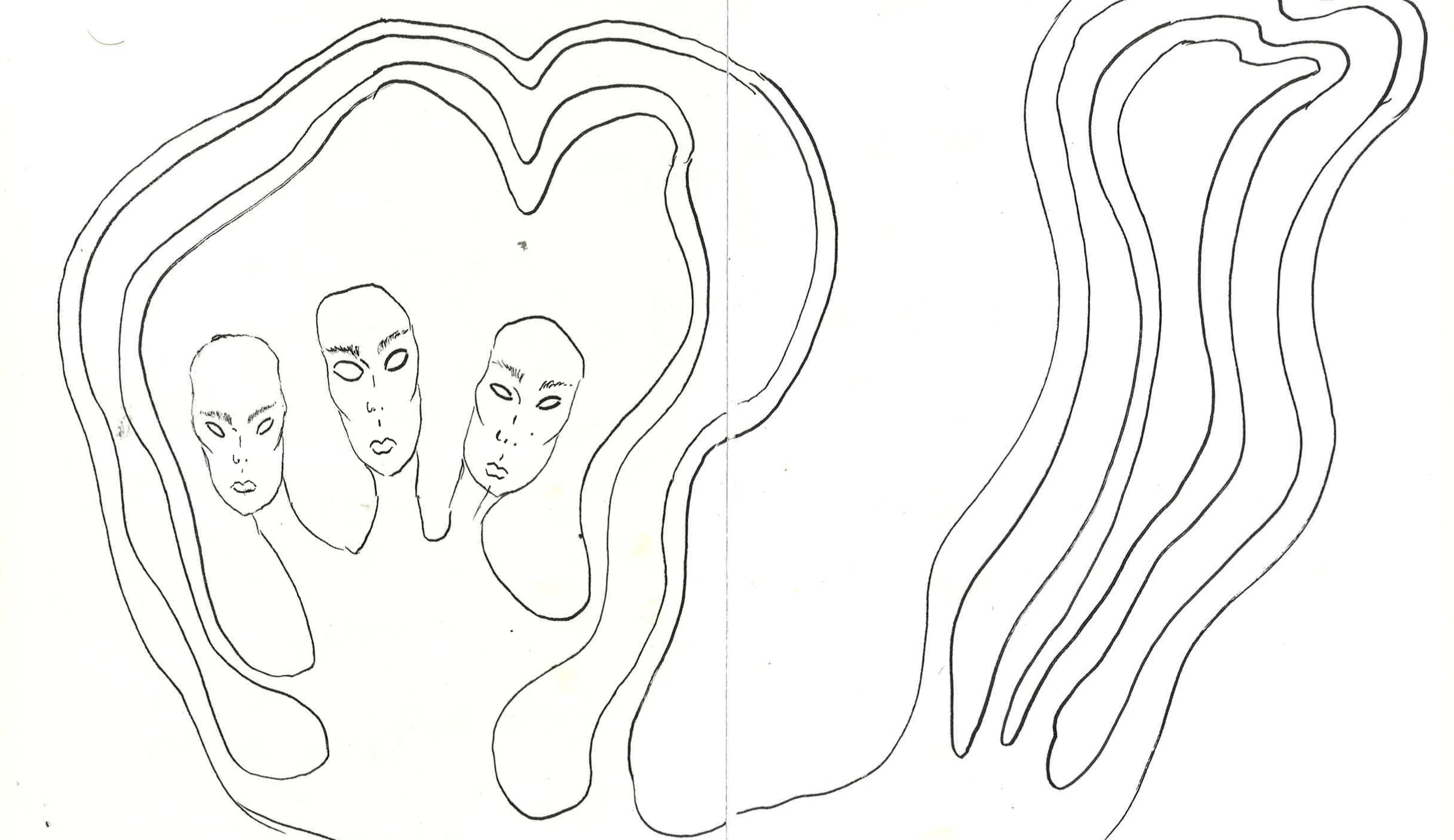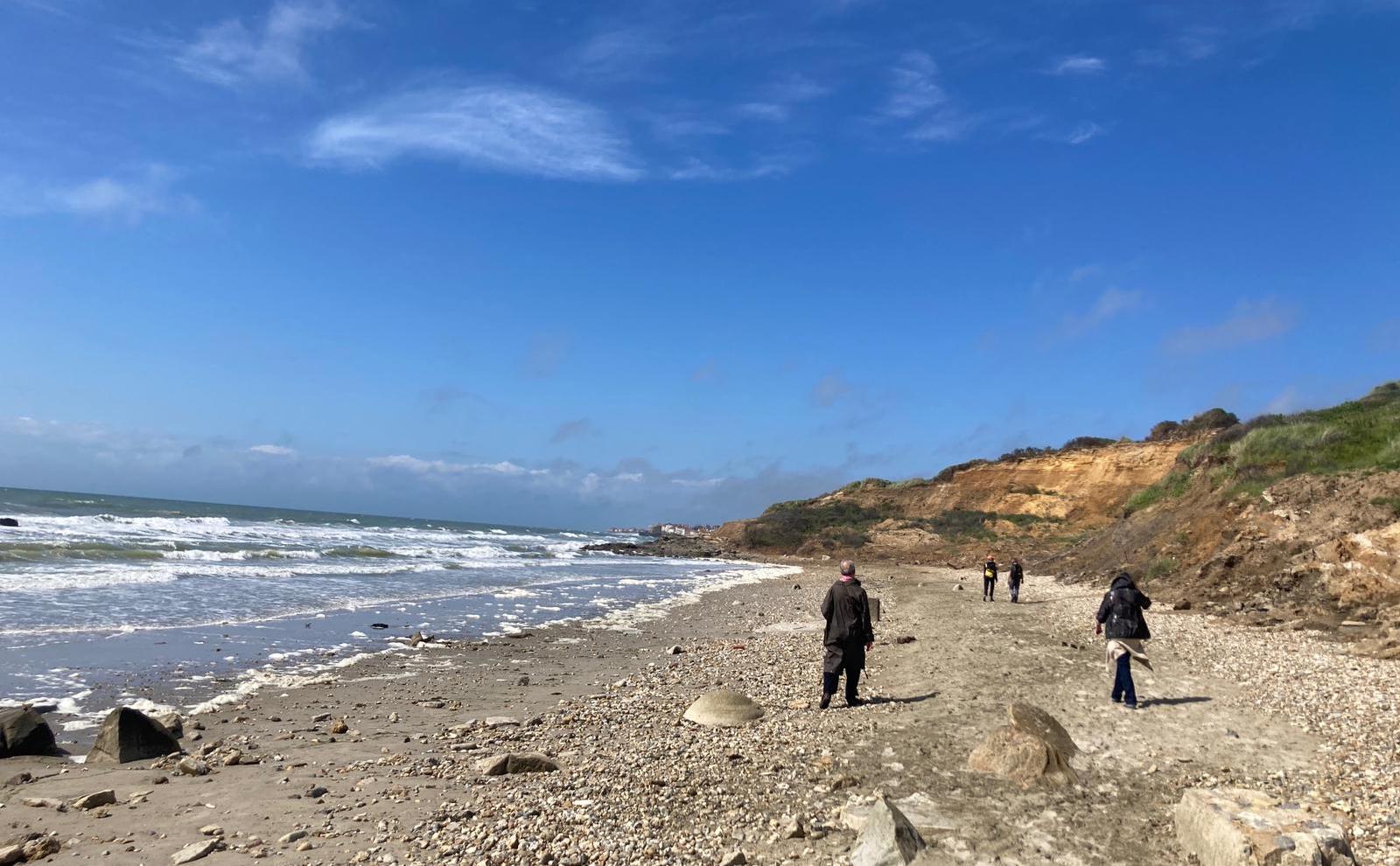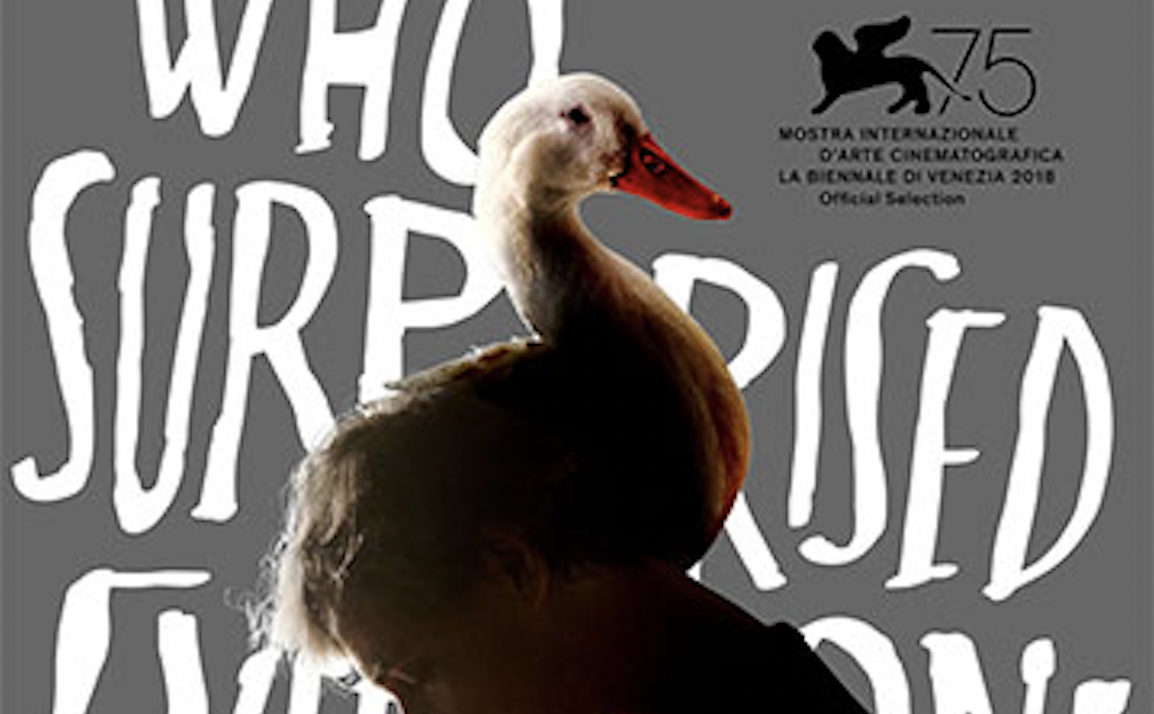[EN] Three artists are invited to collectively create an exhibition in n0dine during the summer. Their practices all deal with the notion of ‘landscape’ and their knowledge about it grows while being on the move, collecting records or making interventions into the topography of the landscape. The work resulting is multi-layered and connects with our own state of mind as we, living bodies, interact with it. This way, ‘reading the landscape’ triggers new implementations of the ‘body as an archive’. Language, material, landscapes of nature, human or physical traces, all become a part of a dynamic continuum, open to new interpretations…
Christian Hansen has been dealing with landscapes forming borders, also known as ‘corridors’: buffer zones between two landscapes with a designated function. Besides defining borders, they also connect different ways of transportation. Hansen always tries to see a given landscape as an infrastructure, and brings in interfaces to play, decode, or activate it.
Laura Colmenares Guerra is currently focusing on the Amazon basin in Latin-America, which is subject to huge environmental threats due to the extraction of oil, gas and minerals. She observes how the European or Western conceptions of ‘territory’ are based on landscape fragmentation, whereas corridors actually give this continuity to landscapes. Her project RÍOS TRILOGY proposes a lecture of Amazonia through three different chapters.
Laura Oriol focuses on the permeability of our identities and the invisible knowledge that we do not know we carry. Through the participatory project – the archive we live in – she tries to understand what it is to inhabit a neighborhood/environment, while growing an archive during a stretch of time. The goal for the space is to create something collective, but directed in a way that people have to improvise and encounter their own thoughts as they speak through writing, translating and wood-carving. Wood-carving is part of Oriol’s own ‘heritage’, as her father and grandfather work with wood. When the agriculture in France became industrialised in the 60s, the walnut trees forming hedges were cut in order to redistribute the land. She collected the wood, so people can carve in it, as they listen to the archive.
Which knowledge needs to be made visible?
This question sparked the title for the exhibition, which functions as a score for the artists to start a conversation and produce work while they are present at n0dine.
Laura Oriol will direct this score about embodied archives by passing on questions to her colleagues. Spending a part of his summer in Yerevan, Christian Hansen chases the common characteristics between the landscape and his own state of mind and associations through his field notebooks and ongoing recording practice. Laura Colmenares Guerra takes the time to work on some 3D printed clay-sculptures and a try out of her VR-project. During the summer, works will be added and re-arranged in the space.
We’ll keep you posted via the website and newsletter!
___
[NL] Drie kunstenaars werden uitgenodigd om een gezamenlijke expositie te maken in n0dine tijdens de zomer. Hun praktijken benadert de notie van ‘landschap’ hun kennis daarover groeit wanneer ze onderweg zijn, sporen verzamelen of interventies maken in de topografie van het landschap. Het werk dat hieruit voortkomt is meerlagig en gaat een connectie aan met onze eigen mindset wanneer wij, met onze levende lichamen, ermee in contact treden. Op deze manier wordt ‘lezen van het landschap’ een trigger om het ‘lichaam als archief’ op diverse manieren te implementeren. Taal, materiaal, landschappen van natuur, menselijke of fysieke sporen worden allen onderdeel van een dynamisch continuuum, open voor nieuwe interpretaties…
Christian Hansen werkt rond landschappen die grenzen vormen, bekend als ‘corridors’: buffer zones tussen twee landschappen met een bestemde functie. Behalve dat ze grenzen afbakenen, maken ze een verbinding tussen verschillende vervoerswijzen. Hansen probeert een gegeven landschap steeds als een infrastructuur te beschouwen, en gebruikt verschillende interfaces om die te bespelen, decoderen of activeren.
Laura Colmenares Guerra focust momenteel op het Amazonebekken in Latijns-Amerika, dat door de winning van olie, gas en mineralen aan enorme milieubedreigingen is blootgesteld. Ze observeert hoe Europese of Westerse opvattingen van ‘territorium’ gebaseerd zijn op landschapsfragmentatie, terwijl corridors juist deze continuïteit aan landschappen geven. Haar project RÍOS TRILOGY stelt een lezing van het Amazonegebied voor doorheen drie verschillende hoofdstukken.
Laura Oriol focust op onze eigen doorlaatbaarheid van onze identiteit en de onzichtbare kennis waarvan we niet weten dat we die bij ons dragen. Via het participatieve project – the archive we live in – probeert ze te begrijpen wat het is om een buurt/omgeving te bewonen, terwijl er gedurende een bepaalde tijd een archief wordt opgebouwd. Het doel van de ruimte is om iets collectiefs te creëren, maar op zo’n manier gedirigeerd dat mensen moeten improviseren en hun eigen gedachten tegenkomen terwijl ze spreken door middel van schrijven, vertalen en houtsnijden. Houtsnijden maakt deel uit van Oriol’s eigen ‘erfenis’, aangezien haar vader en grootvader met hout werken. Toen de landbouw in Frankrijk in de jaren ’60 geïndustrialiseerd werd, werden de walnootbomen die heggen vormden gekapt om het land te herverdelen. Ze verzamelde het hout, zodat mensen erin kunnen kerven, terwijl ze naar het archief luisteren.
Which knowledge needs to be made visible?
Deze vraag leidde tot de titel van de tentoonstelling, die fungeert als een soort partituur voor de kunstenaars om een gesprek te beginnen en werk te produceren terwijl ze in n0dine aanwezig zijn. Laura Oriol zal deze partituur over belichaamde archieven regisseren door vragen door te spelen aan haar collega’s. Christian Hansen brengt een deel van zijn zomer door in Yerevan en gaat op zoek naar de gemeenschappelijke kenmerken tussen het landschap en zijn eigen gemoedstoestand en associaties via zijn notitieboekjes en zijn archief van geluidsopnames. Laura Colmenares Guerra neemt de tijd om te werken aan een aantal 3D-geprinte kleisculpturen en een try-out van haar VR-project. Tijdens de zomer zullen werken worden toegevoegd en herschikt in de ruimte.
We houden jullie op de hoogte via de website en de nieuwsbrief!
[FR] Trois artistes seront invités à créer une exposition collective chez n0dine durant l’été. Chacun dans leurs pratiques s’intéresse à la notion de « Paysage ». Ils étoffent et modifient leurs perspectives lors de leurs déplacements. Ils ont collecté des documents ou sont intervenus directement dans la topographie du paysage. Leurs travaux offrent plusieurs couches de lectures, ils entrent en relation avec le spectateur en tant que vivant interagissant avec le paysage. De cette façon, « lire le paysage » déclenche de nouvelles implications du « corps comme archive ». Langage, matière, paysages naturels, ainsi que les traces laissées par les humains deviennent les parties d’un tout dynamique, ouvert à de nouvelles interprétations.
Christian Hansen s’est intéressé aux paysages délimitant des frontières. Connues aussi sous le nom de « corridors », ces zones tampons entre deux territoires ont une fonction spécifique. Outre le fait de dessiner des frontières, ces « couloirs » relient différents moyens de transport. Hansen essaie toujours de voir un paysage comme une infrastructure, puis il y introduit des interfaces pour jouer, le décoder ou l’activer.
Laura Colmenares Guerra travaille actuellement sur le bassin Amazonien d’Amérique latine sujet à d’importantes menaces environnementales à cause de l’extraction de pétrole, de gaz et de minéraux. Elle nous fait remarquer la façon dont la notion, européenne et occidentale, de « territoire » s’est fondée sur la fragmentation du paysage, alors que les corridors illustrent la continuité du paysage. Son projet RÍOS TRILOGY propose une lecture de l’Amazonie en trois chapitres.
Laura Oriol se concentre sur la perméabilité de nos identités et les connaissances invisibles que nous portons sans le savoir. Avec le projet participatif – the archive we live in – elle tente de comprendre ce que signifie habiter un quartier, un environnement. L’archive va s’étoffer tout au long de l’exposition. Le but de son espace est de créer quelque chose de collectif, elle l’a pensé de façon à amener les gens à improviser via l’écriture, la traduction et la sculpture sur bois. Oriol a reçu la sculpture sur bois en héritage de la part de son père et de son grand-père. À l’époque où l’agriculture en France s’est industrialisée, dans le courant des années 60’, les haies de noyers furent rasées pour la redistribution des terres. Laura Oriol a collecté elle-même du bois afin que les gens puissent le sculpter tandis qu’ils écouteront les archives.
Quelle connaissance doit être rendue visible ?
Cette question est à l’origine du titre de l’exposition.Elle fonctionne comme une partition permettant aux artistes d’entamer une conversation et de produire des œuvres pendant leur présence à n0dine. Laura Oriol introduit cette question au coeur de ses archives incarnées la transmettant directement à ses paires. Durant son été passé à Yerevan, Christian Hansen compile les caractéristiques communes entre son état d’esprit, le paysage et ses associations, dans ses carnets de terrain et à travers sa pratique continue de l’enregistrement. Laura Colmenares Guerra travaille, elle, sur des impressions 3D de sculptures d’argile et un essai de son VR-Project. Durant l’été des œuvres seront ajoutées et réarrangées dans l’espace.
Nous vous tiendrons au courant sur notre site web et avec la newsletter !
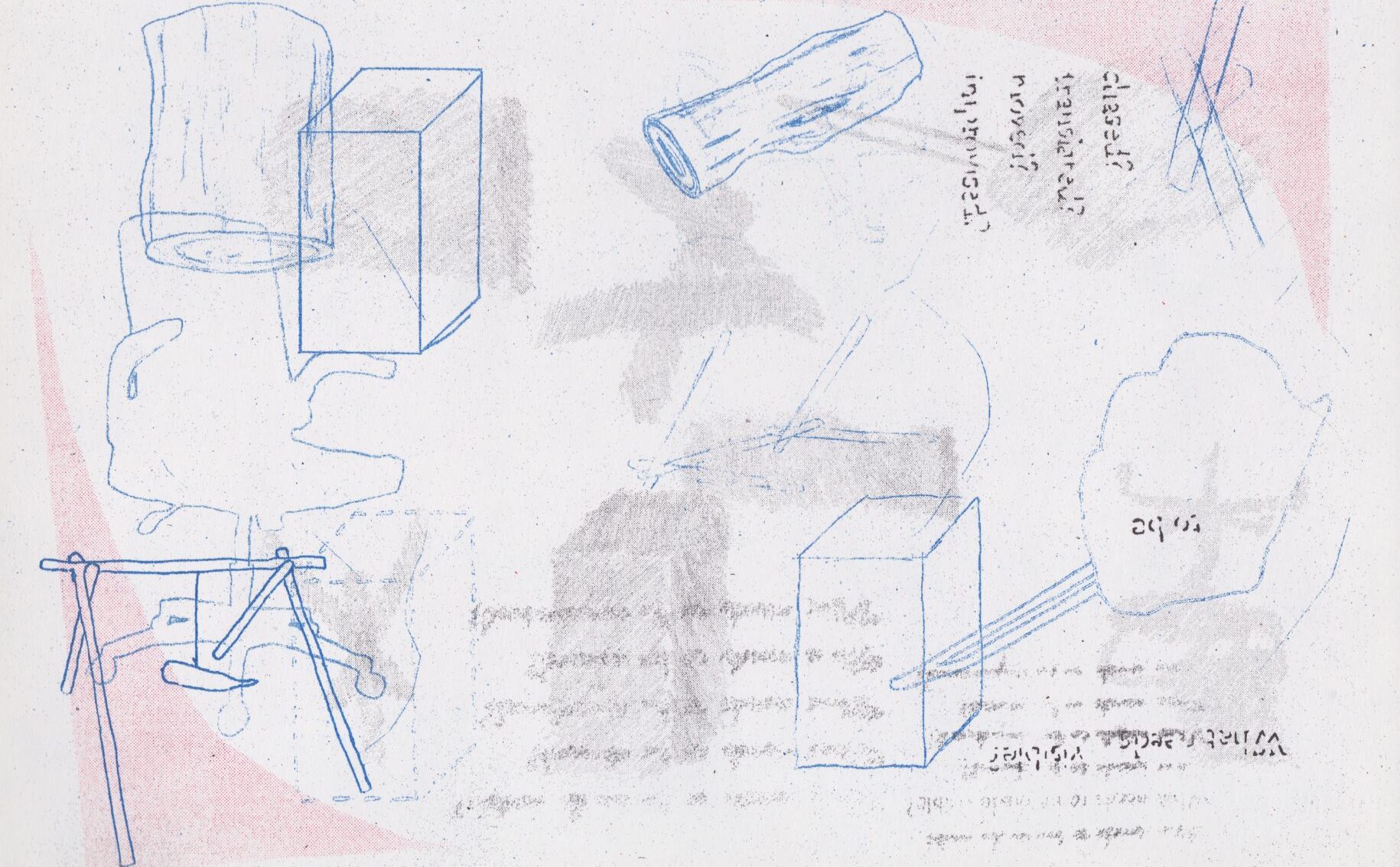
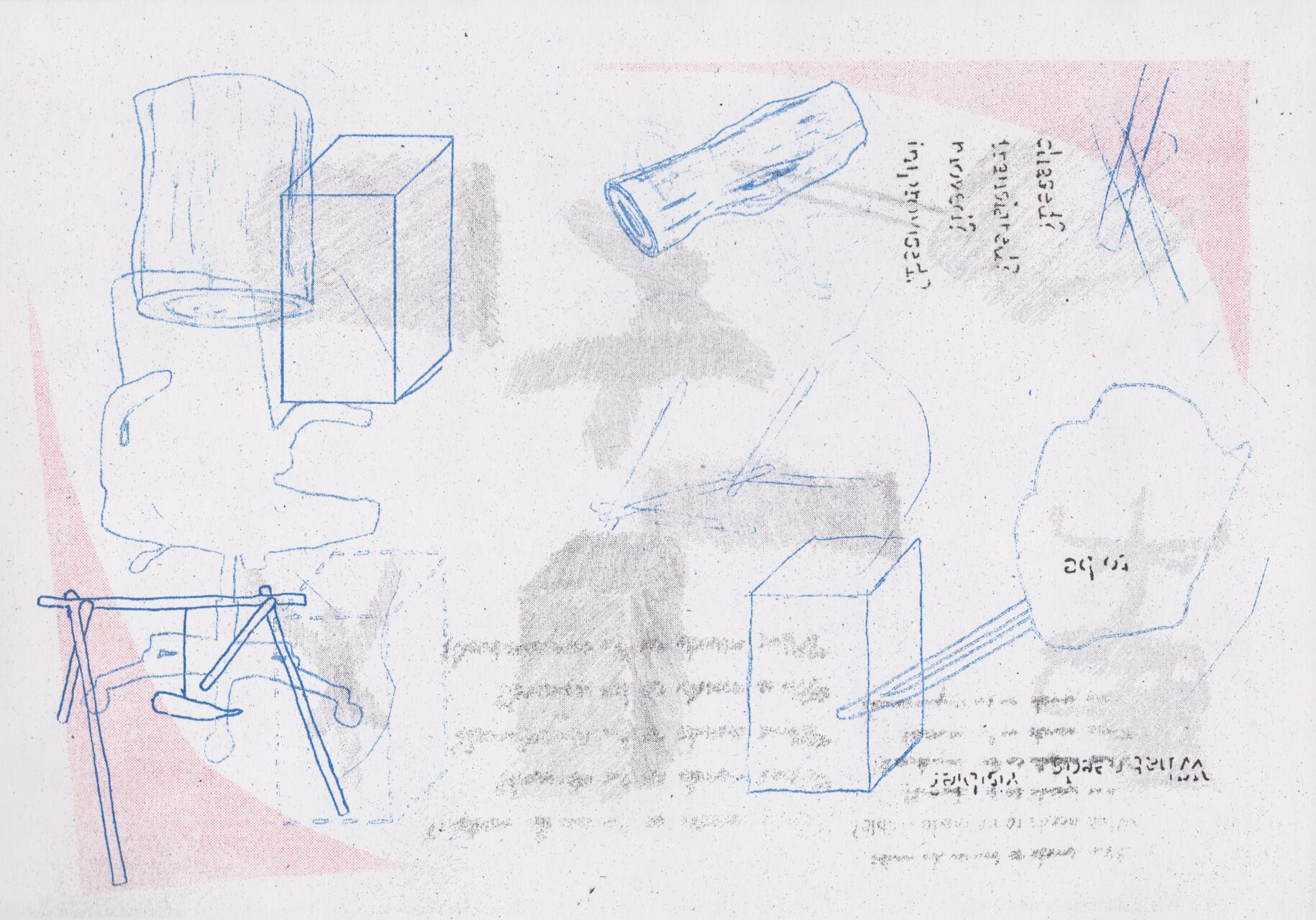
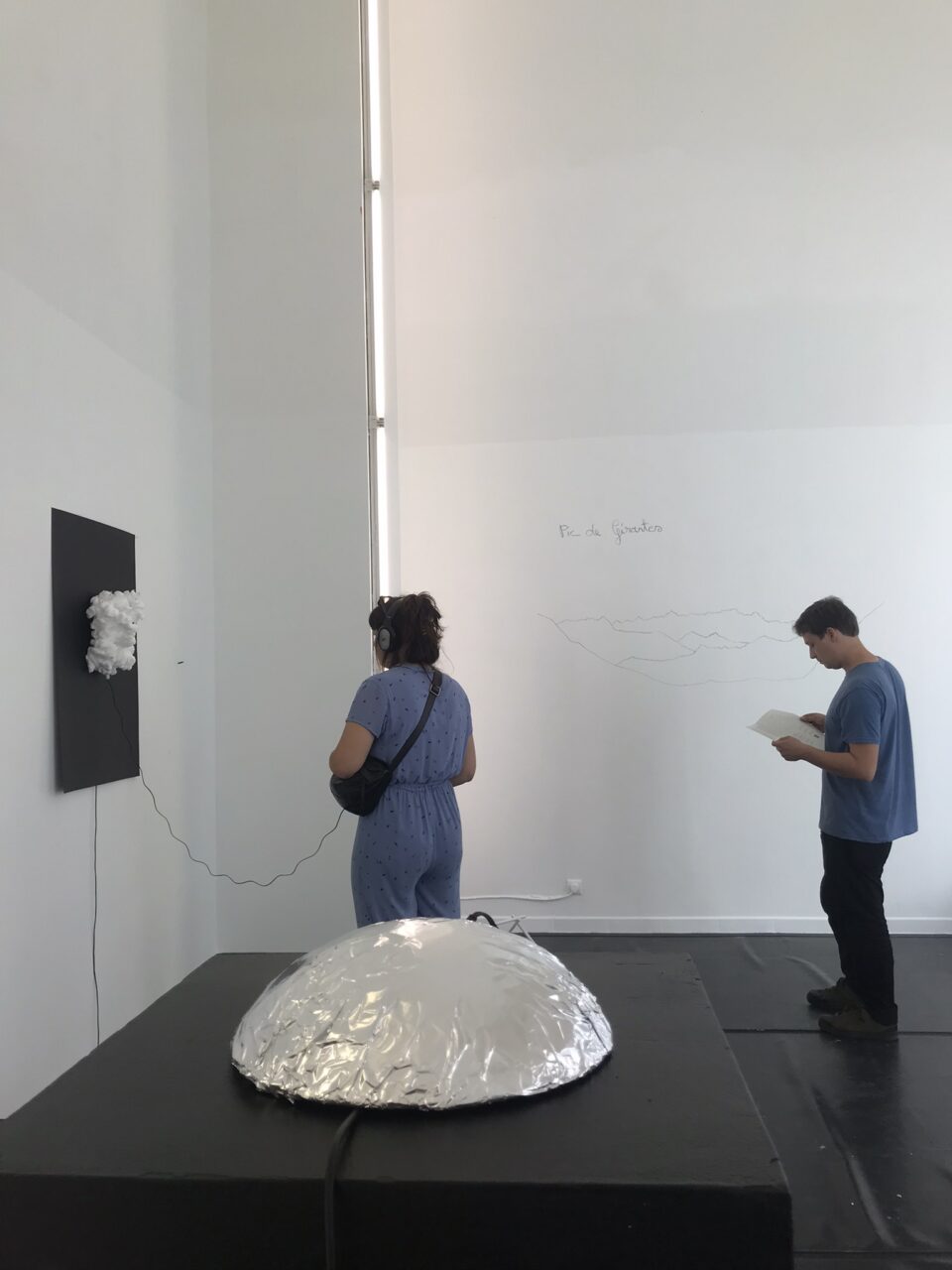
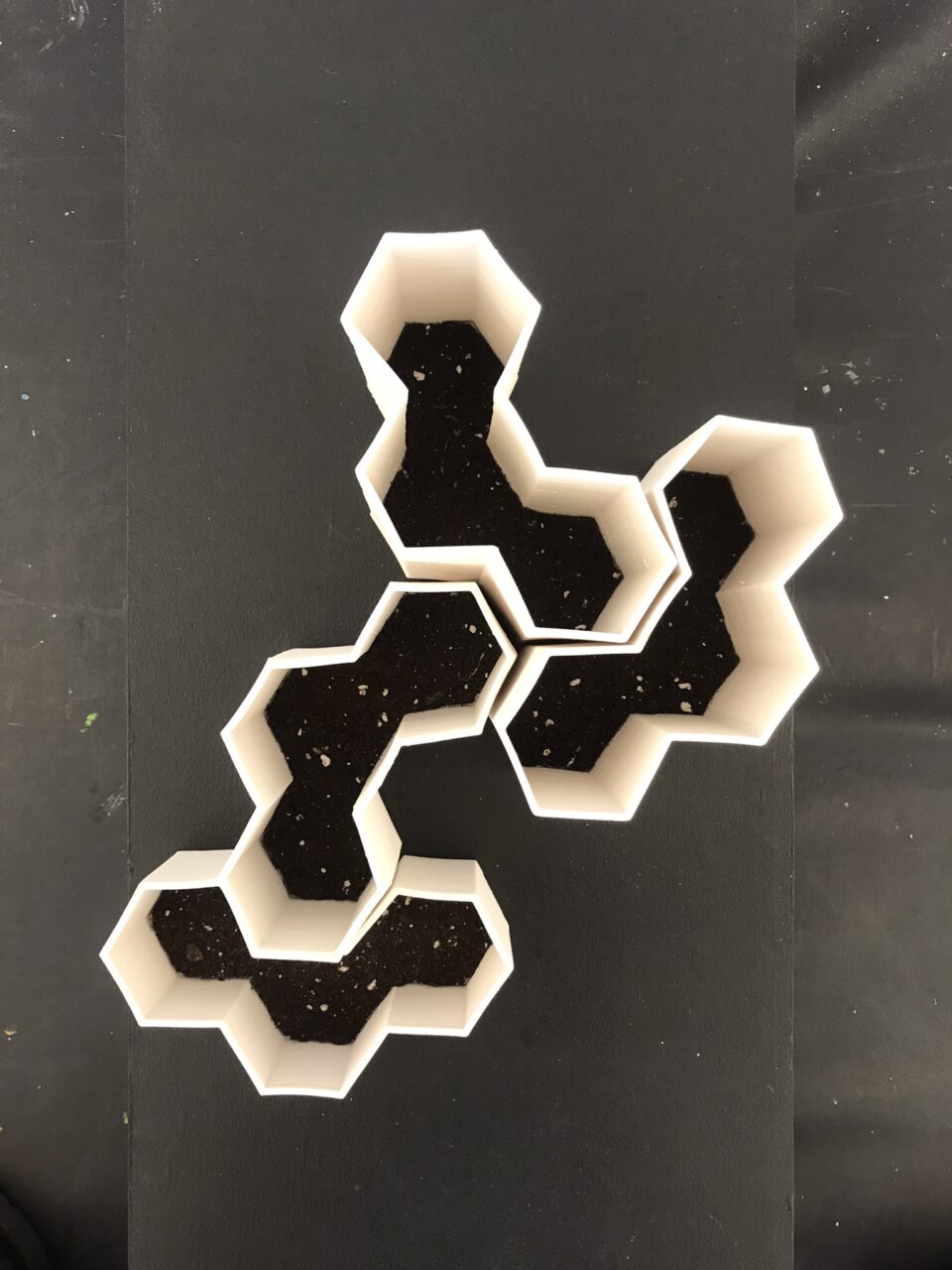
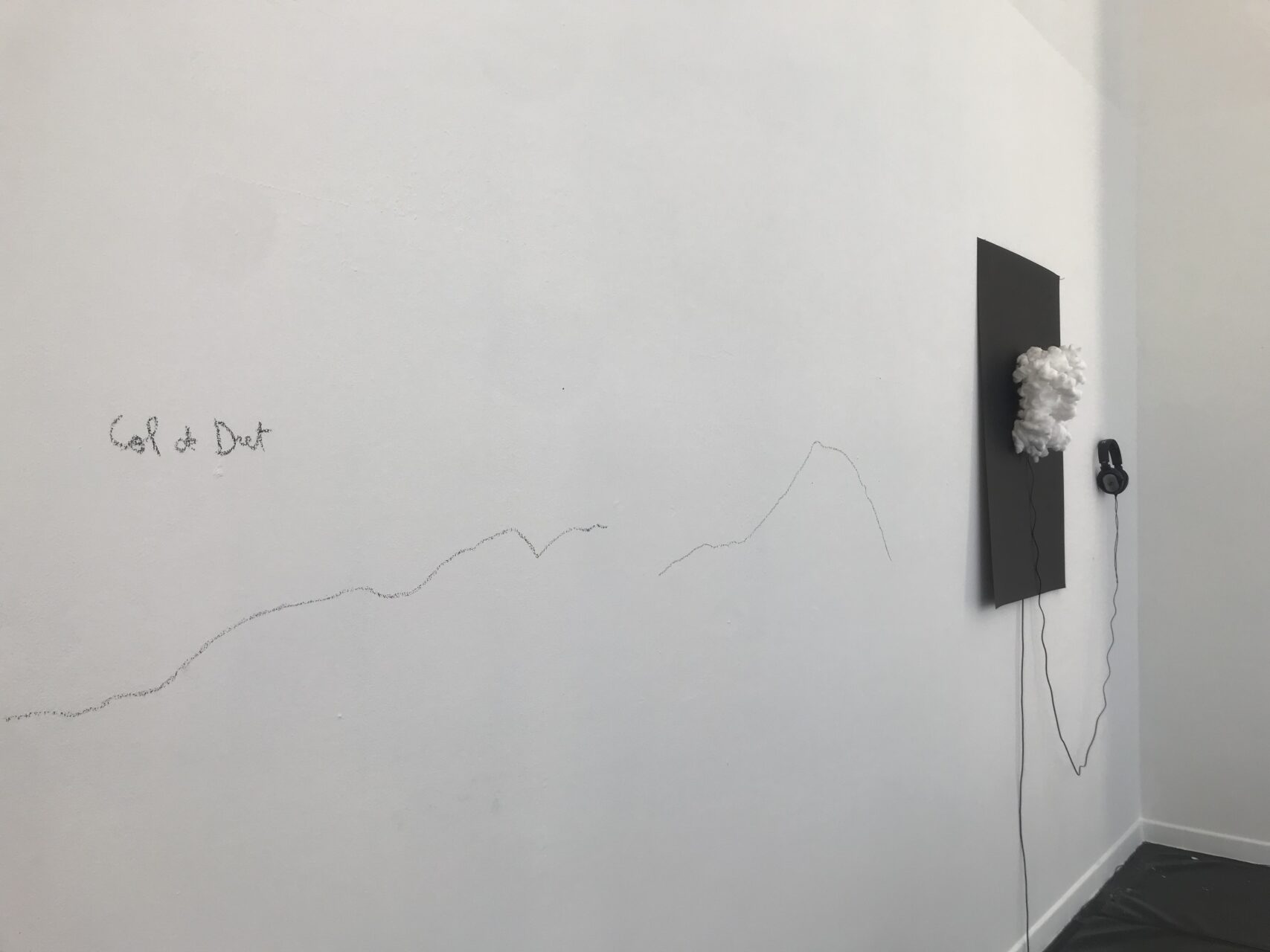
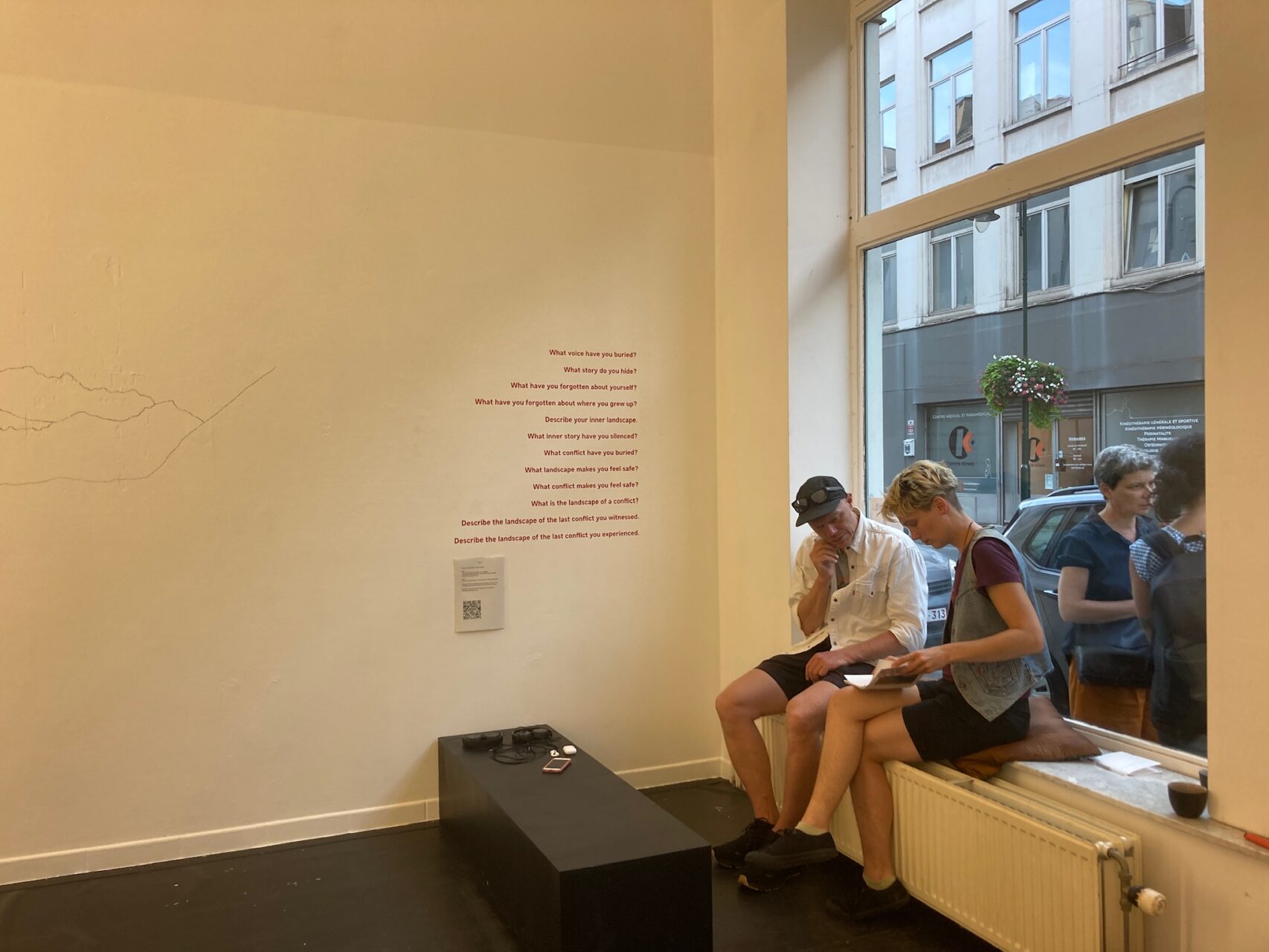
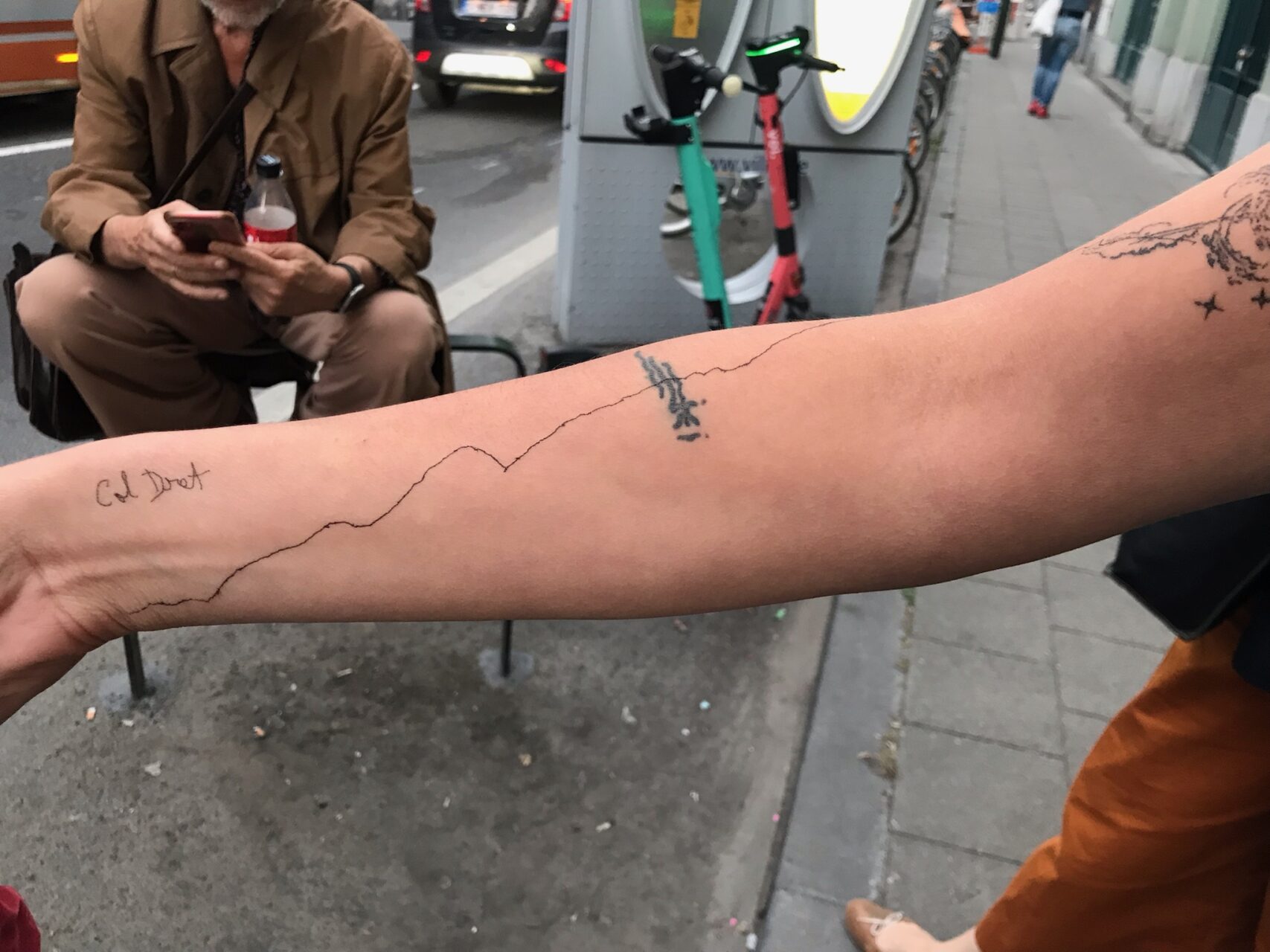
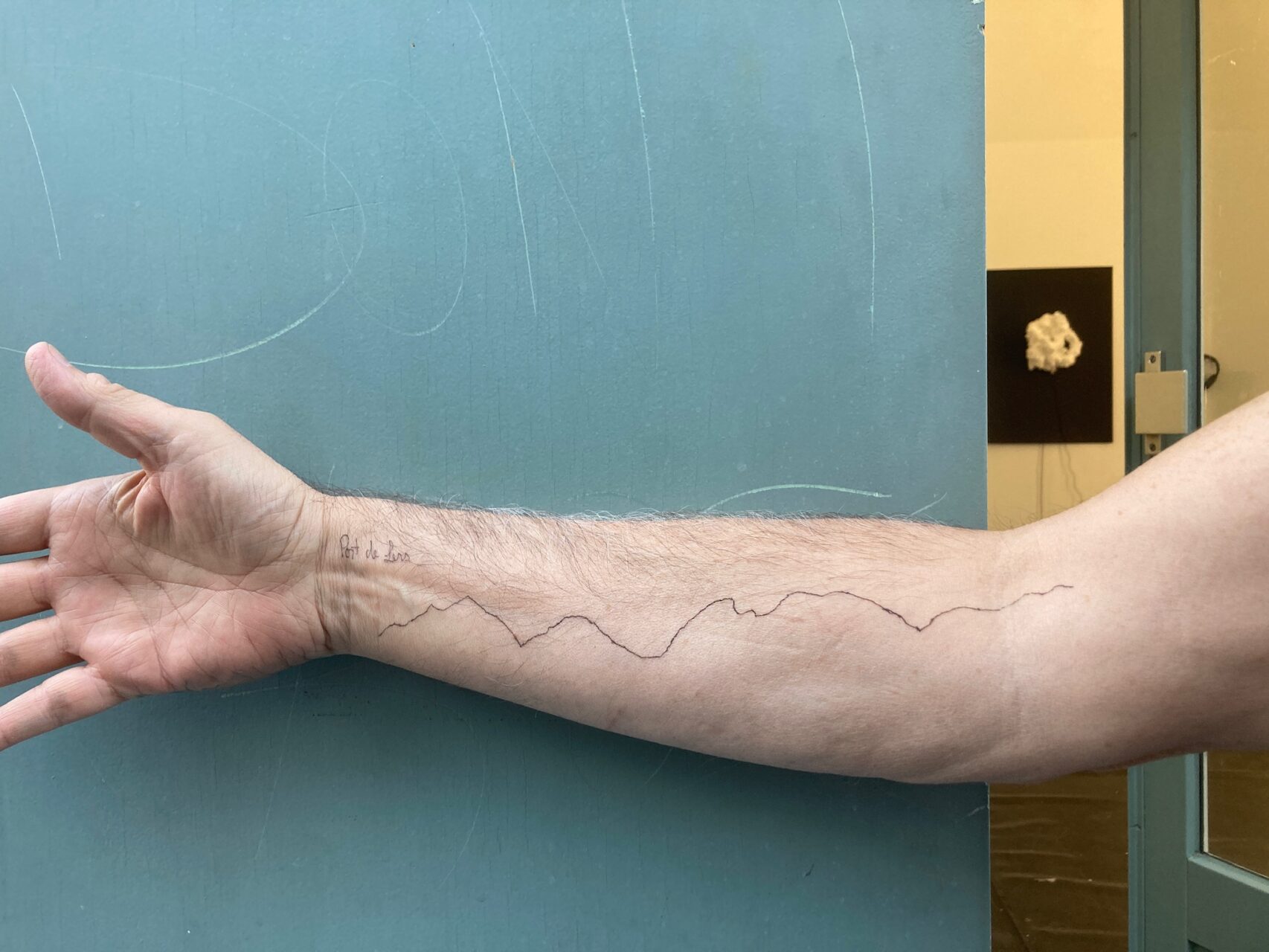
 RELATED
RELATED 